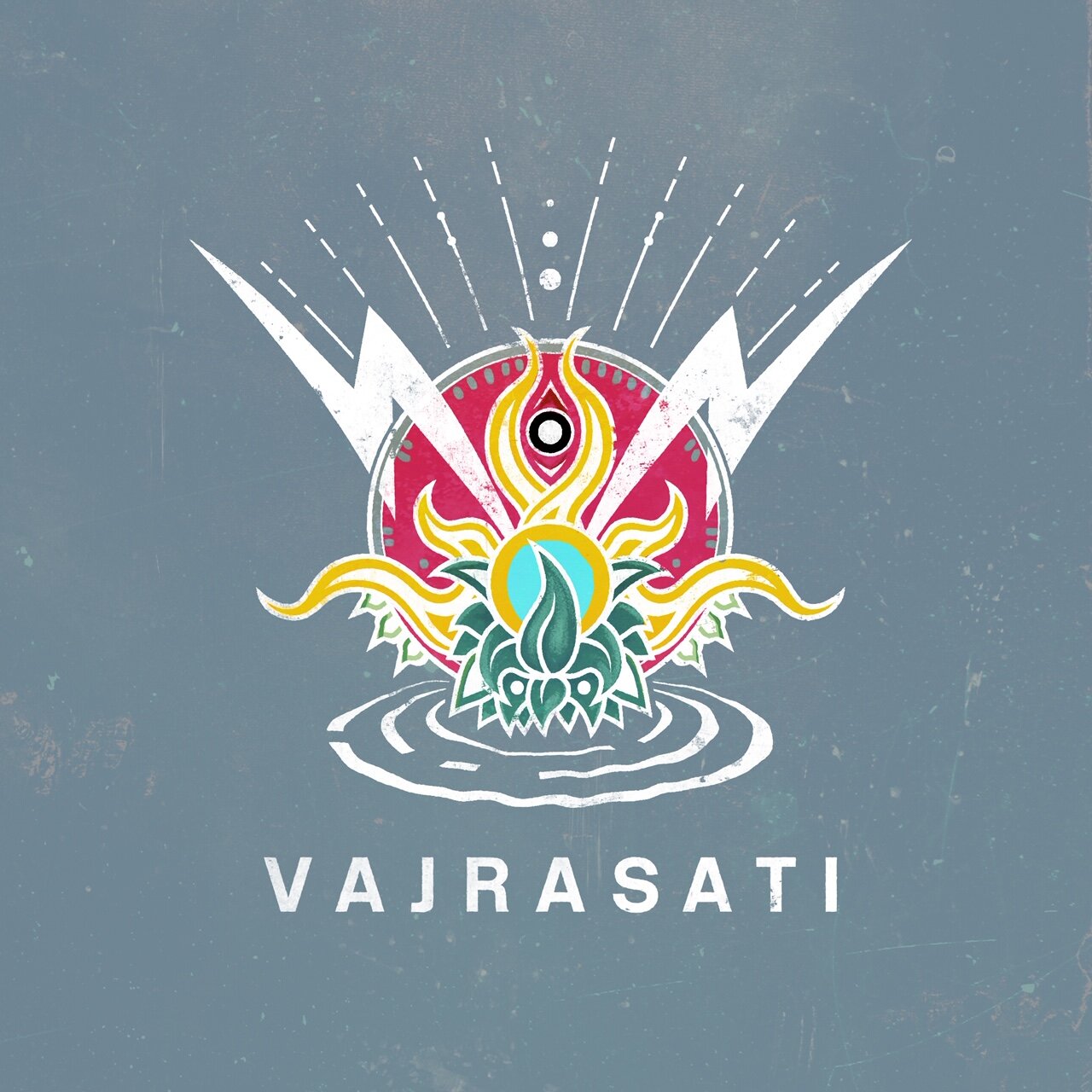A Short Piece on the History of the School
Jim Tarran
Vajrasati Yoga
Take elements from Buddhism, Hatha and Raja Yoga mix together with love, warmth, and laughter and you get Vajrasati Yoga.
This yoga tradition emerged in the UK in 2000.
The need for a new style
It all started with the personal yoga journey of Brighton‐based Jim Tarran whose path started in 1990 with the parallel attendance of yoga classes and Buddhist groups.
In 1992 he commenced a hatha teacher trainer course and in 1994 the Iyengar teacher training programme.
Both courses where indisputably valuable in terms of learning alignment, adjustment and the principles of using props. Jim also forged some invaluable friendships with colleagues on the courses and with his tutors who offered time, enthusiasm and energy and remain to this day deeply respected by him.
It was however during this period (1994-1999) that the external aspect of yoga began to take precedence over the internal. Intuitive elements that had revealed themselves in Jim’s earlier practice seemed to be being supplanted by more prescriptive and dogmatic ones. Institutionalism, politics and power, in the context of a large organisation, can start to muscle out personal integrity and individual investigation and it was perhaps these kinds of forces that where responsible for Jim's sense of inner guidance becoming diminished.
The diminishing of his own inner guidance arose more, Jim felt, in response to membership of the whole Iyengar school than as any reflection of his teachers at the time or even the teachings of B.K.S Iyengar himself, who continues to be a great inspiration to Jim to this day. He remained a member of the Iyengar school for ten years during which time it became apparent to Jim that B.K.S Iyengar was teaching from his explorations-in-practice and that this was the source of the teachings followed by the Iyengar school.
This was enough to plant a beginning seed in the development of Vajrasati.
A series of questions began to beg answers:
Who is it that decides what yoga is?
Where does the knowledge come from?
How is that knowledge discovered?
What are the criteria to be able to judge whether the yoga you practice is authentic and truly beneficial in a holistic sense?
To facilitate this Jim set out to create the necessary framework and founded Vajrasati Yoga in 2000.
Vajrasati Yoga
Vajra means thunderbolt/diamond (Sanskrit), sati means awareness in Pali (the language of early Buddhism) the name was chosen to mean ‘unobstructed awareness'.
The focal point of the class is to develop fluidity of body, mind and breath.
Pranayama, which is often classed in other yoga schools as breath control or retention, is essential for a Vajrasati Yoga class, it is viewed as the gateway to Samadhi (literally - all things integrated) and is seen as a flow that runs equally and simultaneously through the body, brain and breath. This symbiotic flowing is achieved through an emphasis on non-violence and gracefulness, essentially a kind of letting go into a state of presence. This state of Pranayama (literally - expanded life force) can also be nudged and teased through pranayama techniques so that the yogi may get to really know it.
An awareness about the flow of energy through the nadis (literally - flowing rivers) is also developed (Nadis are channels of the subtle body through which energy flows. They connect at special points of intensity called chakras).
Classes resemble traditional Iyengar classes in terms of postures, the typical Iyengar aids like blocks and belts are used. However, the classes emphasize personal experiences and right from the start explore the Yoga Sutras of Patanjali. Implicitly and explicitly non-violence (ahimsa), honesty (satya), investigation (svadyaya) and a sense of trust (ishvara pranidhana) are encouraged.
Class style can vary widely depending on abilities and the needs of students. However, Pantanjali's eighth limb of yoga, samadhi or enlightenment, is definitely the bottom line of a Vajrasati Yoga class.
Normally you would say that dynamic and static postures are used in class, but in Vajrasati Yoga the word 'static' for stays in postures is avoided. Vajrasati students are encouraged to feel the flow of life, intelligence and breath in the stay of a pose.
There are already 28 Vajrasati Yoga teachers in the UK; some of them will soon qualify to also train new Vajrasati Yoga teachers. The Vajrasati Yoga teacher training was formally assessed by Yoga Alliance US. Now Yoga Alliance UK is the new official body to verify the standard of teacher training in the UK. Vajrasati founder Jim Tarran is currently very busy preparing material for future teacher training courses.
All teachers are equal and everyone can exchange ideas and learn from each other.
Founder Jim Tarran prepares a 'tool-belt of method and means' for teachers, which they can use to offer students what they need in order to take their next step to Samadhi and to keep learning about the art of teaching.
Quotes
On resistance in practice…
‘In asana practice we may find an obvious resistance such as a strong stretch in a muscle. We can choose to ignore the sensation, usually resulting in totally the opposite result and an almost compulsive fixation with the sensation. Or we can chose to move ourselves into the sensation and work with it which ironically allows us to release from the sensation and let it go.’
— Khadine Morcom
